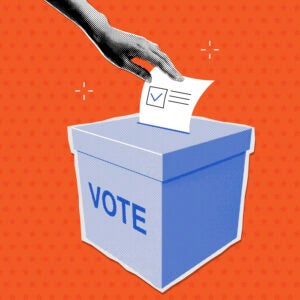Here’s today’s AdExchanger.com news round-up… Want it by email? Sign up here.
Get In The Game
It’s all fun and games until someone sees an ad.
Electronic Arts is done slow-rolling into advertising.
On an earnings report in May, CEO Andrew Wilson called ad revenue a “meaningful driver of growth.” EA’s job listings indicate plans to consolidate its advertising to a unified offering, Digiday reports.
In 2017, when EA hired programmatic vet Belinda Smith for its marketing, she described the company’s internal “Player Graph” – an identity graph for gaming that classifies players based on things like whether they purchase in-game rewards, prefer to play solo or multiplayer, seek higher rankings within the game or prefer emotional immersion.
That’s a powerful tool not only for EA’s own marketing analytics, but to monetize on behalf of advertisers.
However, programmatic brings peril. Right now, EA’s ad business is well integrated. Sponsors of real sports stadiums can pay to sponsor the in-game stadium, say. If EA wants to serve ads programmatically across games rather than do direct sales for specific titles, it must rewrite its code. And if/when that’s done, it has the tougher problem of preventing programmatic ads from ruining the gamer experience.
Sensitive Tech, Sensitive Teeth
Anyone who’s seen a teeth-whitening ad with suspicious “before” and “after” shots can understand why a toothpaste manufacturer might want to underline its credibility.
To prove the content of its ads are real, the health care company Haleon is experimenting with “content credentials” from the Coalition for Content Provenance and Authenticity (C2PA) in campaigns for Sensodyne, its toothpaste brand.
The technology creates a metadata watermark with information about the creative content, such as the names of featured experts (dentists, in Sensodyne’s case) or explanations of any special effects in the ad, per Ad Age.
The goal is to reduce the risk of health-related misinformation, which has long been a problem and is currently rampant on Gen Z favorite TikTok, to name one example.
This may be a turning point for C2PA, which is yet to achieve widespread adoption since its founding in 2019. But as it becomes easier to create misinformation with AI, brands that rely on experts or are in widely scammed categories may pile on to this new type of creative verification.
The Mission Or Emissions?
Remember Google’s motto, famously outlined in its 2004 IPO filing? “Don’t be evil.”
The original rationale for the phrase’s existence was Google’s insistence that no one could pay to appear in (organic) search results.
That episode came to mind with the news that Google will cease buying carbon emission credits and stop claiming to be carbon neutral, which had been a pillar of the brand’s messaging since 2007, Bloomberg reports.
The reason? Generative AI software.
Google’s policy reversal doesn’t directly affect the ad business. But it’s an indicator of how sustainability and environmental goals will (and won’t) affect ad tech. Many companies are making loud commitments to sustainability goals. They have louder commitments to AI, though. And using AI software consumes a crazy amount of electricity. Google didn’t cite its AI software as the rationale for no longer purchasing carbon credits. But once the PR plug of saying the company is “carbon neutral” became untenable, Google stopped mass purchases of carbon credits altogether.
When business priorities run up against sustainability commitments, carbon will lose out to silicon – and cash.
But Wait, There’s More!
The venture capital ecosystem is all in on artificial intelligence. [Axios]
Despite Elon Musk’s Cannes performance, X’s slow brand safety development still haunts marketers. [Adweek]
Corporate bankruptcies are at a 13-year high, due in no small part to decreased consumer spending. [Business Insider]















